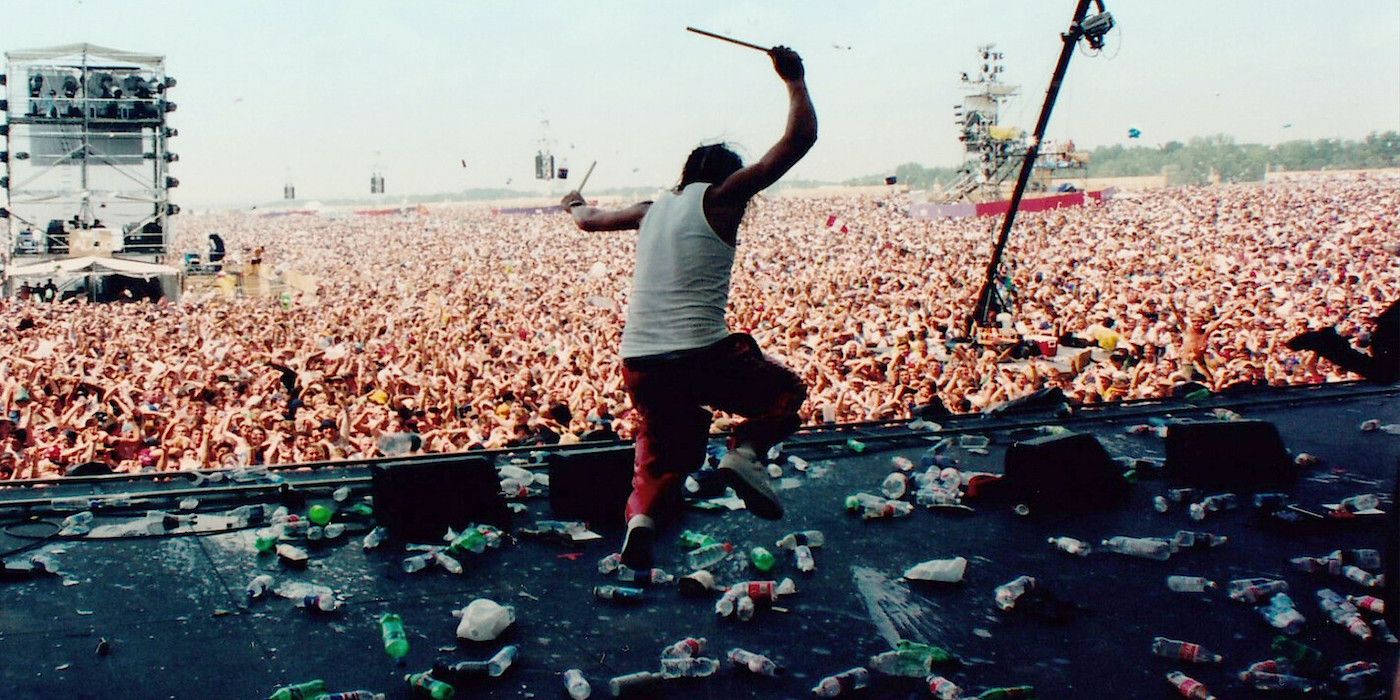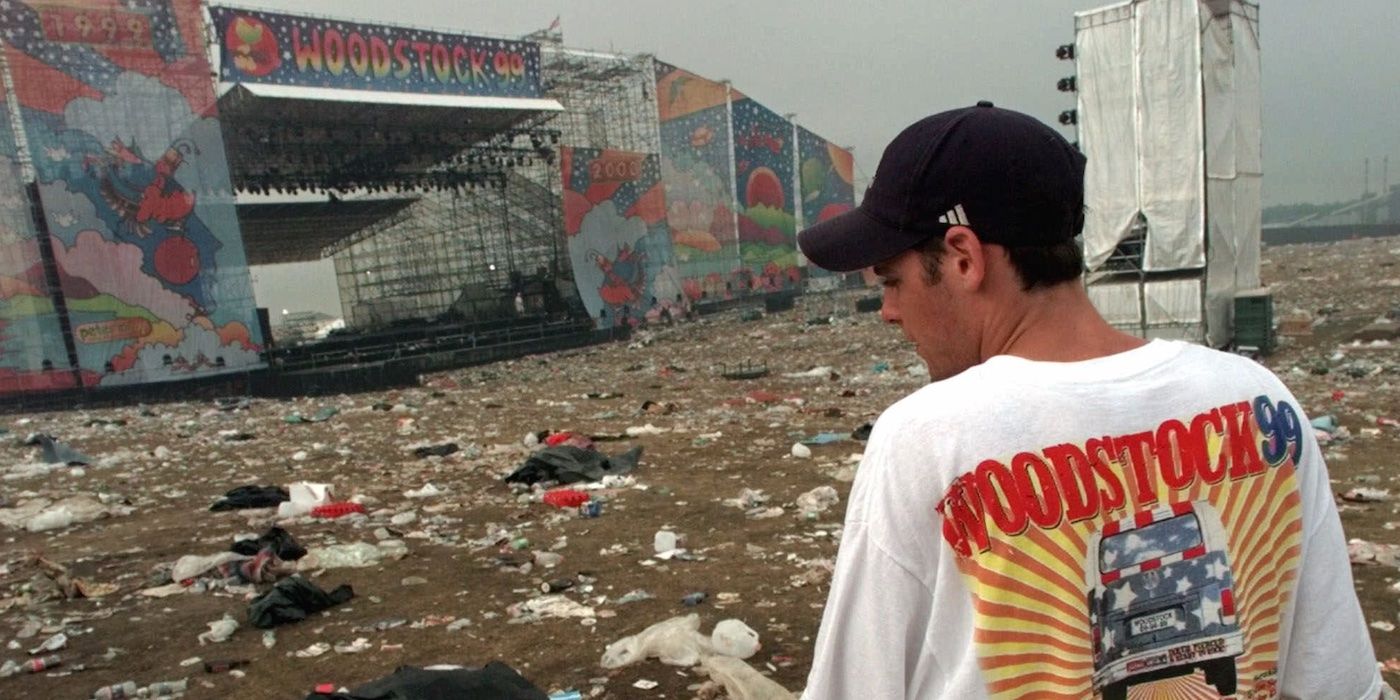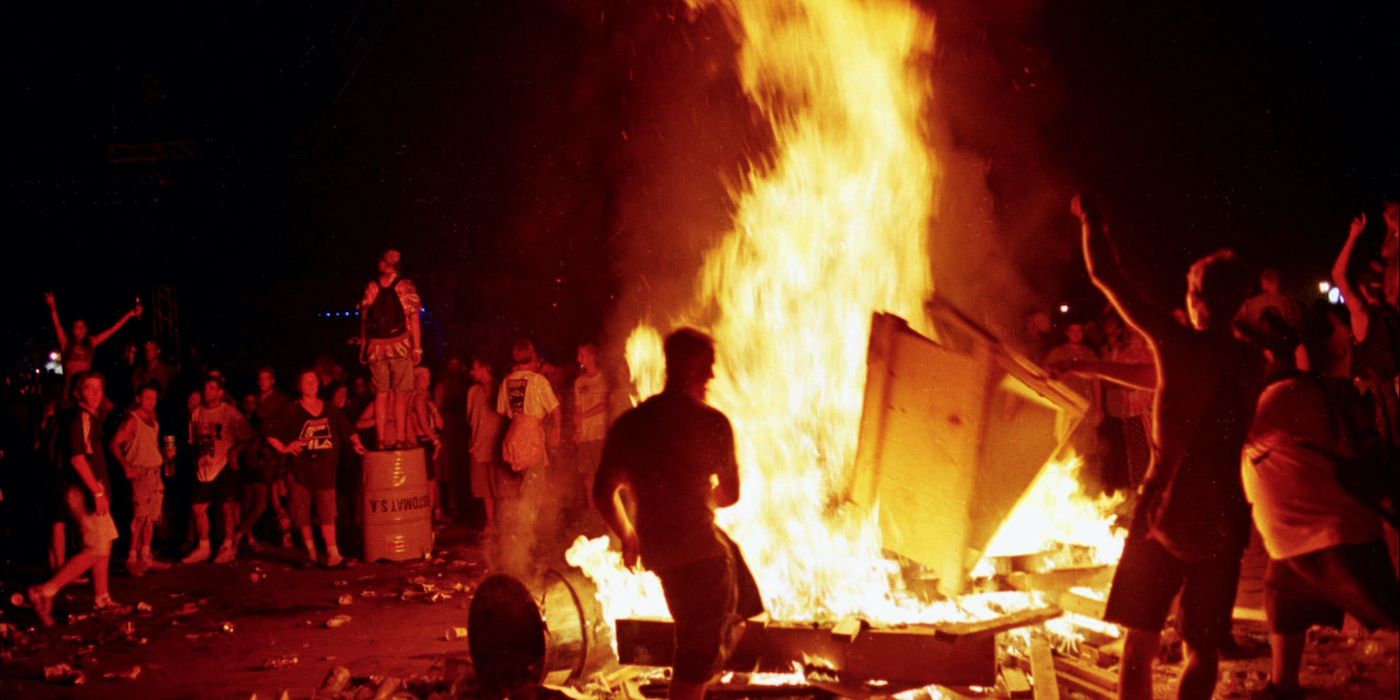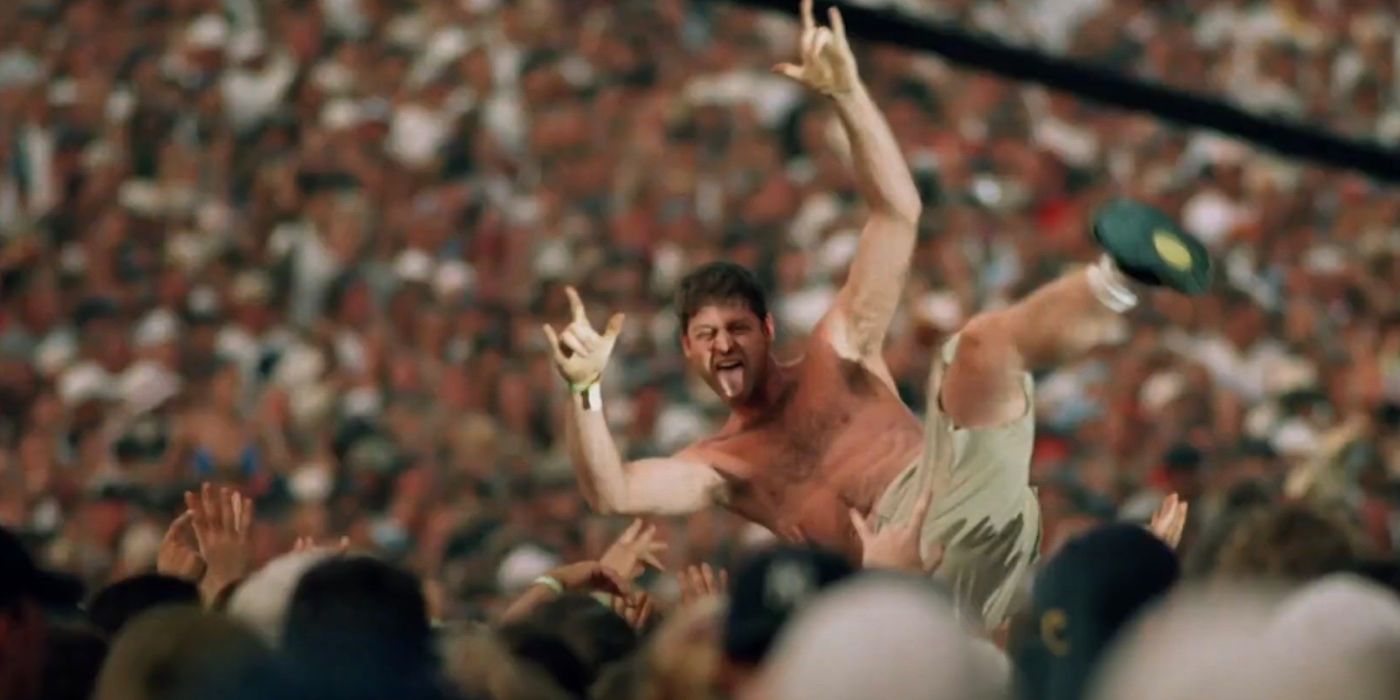Woodstock 1999. What is there to say about the infamous festival that hasn't been said by the smallest YouTube channels to the major news networks? It was an unmitigated disaster from start to end, with every possible element — the music, the production, even the weather — building up and erupting into assault, vandalism, and arson. It all concluded with a massive riot that eventually had to be pulled apart by state troopers. Mass hysteria inflicting an unconscious scorched earth policy on the showgrounds, injured festival goers left and right, and worst of all, Kid Rock was there. How the music festival that was supposed to be a revival of the halcyon days of free love and flower power literally burned to the ground has been a subject of intrigue for many, and within a year of each other, two of the biggest streaming services released their own retellings.
As part of their Music Box series, the first of six episodes, HBO Max released Woodstock '99: Peace, Love, and Rage back in July 2021. In August of this year, Trainwreck: Woodstock '99 premiered on Netflix. This article is not here to say which one is better, or more worth your time; this isn't a review. Nor is it here to contribute to any streaming wars drama going on by speculating if this was an intentional act by Netflix to undercut HBO Max. It is simply here to compare and contrast these twin documentaries to see how two directors, two networks, tell the exact same story.
Let's start with the basics. There are a few quite obvious differences and similarities you'll see almost immediately: The baseline of the story — the event itself — is told more or less in chronological order. Each goes day by day, act by act, even hour by hour, outlining how things devolved throughout the three-day festival. In this, Trainwreck has the advantage of using a three-episode format, one for each day of the festival. Peace, Love, and Rage runs for almost two hours, so the time difference only comes out to around half an hour. They're both fairly polished documentaries too, Netflix and HBO both having a tenured history of strong content in this genre that is usually released to much attention and discussion before and after.
The story is consistent between the two of them, there are no strong divergences from what actually happened. Footage is shared as are certain important figures, with Michael Lang (co-founder of Woodstock), John Scher (the promoter of Woodstock '99), Joseph Griffo (the mayor of Rome, New York, at the time), and Korn's Jonathan Davis appearing as talking heads. There is consistency: Lang and Scher swearing up and down that the issues were a result of a few bad apples, shirking the blame to the concertgoers who they believed mostly had a positive experience despite overwhelming evidence of the contrary. But consistency of the truth does not mean that the documentaries are identical.
The real question to ask when talking about or comparing documentaries is this: What story are they trying to tell? What statement is being made using this real-life event, and how is that statement made? This is where one sees the main differences between Trainwreck and Peace, Love, and Rage. It is one seen throughout the general documentary style of their respective platforms, the dramatic differences in tone. The wild voyeurism of Tiger King vs the horrified analysis of Class Action Park. It is especially fascinating to see these conflicting methods on the same subject, there are so many ways in which one can tell the story of Woodstock '99 and investigate who or what is really to blame for the mess.
Trainwreck is framed as a straight retelling of the weekend's events, following the energy as it ebbed and flowed and as it built up and exploded, while also spending much of its time behind the scenes of the event. A significant difference, even advantage that Trainwreck has is that everyone interviewed for the series was there on the grounds when it happened; whether they were journalists for ABC or MTV, or members of the production crew and security. As a result, the contention comes from how it was a disaster behind the scenes. There's a lot of footage from staff cameras of board meetings and construction sites, showing how the festival came to be such a disaster and how there was little else they could do to put out the fire once it was lit.
The failure of Woodstock '99 landed on the shoulders of those on top, specifically Scher, as much as he says otherwise. This is a fair assessment to make when you see what the budget cutbacks resulted in: A lack of shaded areas, price gouging food, and water, unqualified security staff, overwhelmed EMTs, and a non-existent cleanup crew that resulted in the showgrounds turning into a cesspool with increasingly hostile guests and musicians chosen who were bound to inspire them to action. It tells the story of contradictions between those who organized the event, and those who were actually there. An innocent, perhaps even naive idea from Michael Lang turned disastrous as a result of inept planning and immense profiteering. The attendees interviewed speak candidly as they all perceive it as an event in history they don't regret going to - giving the documentary a somewhat comedic tone. The documentary's main contention after all is said and done doesn't stray far from the idea of "Look at this crazy thing that happened, and this is how it happened behind the scenes."
Peace, Love, and Rage instead goes in-depth into the societal context, which the Netflix documentary only briefly touches on, and features journalists who weren't there but are looking at the event in a more analytical, retrospective way. They frame Woodstock 1999 within the culture of the time, the late 1990s was a period of rampant misogyny, the progressive grunge era fading away to more macho and aggressive nu-metal acts such as Limp Bizkit. Explaining more that this seems to be the natural result of placing all that aggression and the lack of authority or ethics into a human zoo in the middle of summer. They also demystify the original Woodstock, that it wasn't the beautiful moment of history that is now portrayed, but a primitive music festival that had its own shares of casualties and collateral damage.
The tone is far more harrowing, the interviewees who actually attended talking about the true dark side of the story, being badly injured, having friends dying of hypothermia, and the number of women who were assaulted in those three days alone with Scher blaming the victims. You can't blame Fred Durst for being Fred Durst, but you can blame a society that allowed his music to affect so many people and used his words as a call to violence. The irony of taking the good intentions of a non-profit organization handing out candles for a vigil in memory of the victims of Columbine, and then the guests using those candles to blow up semi-trucks.
There is definitely an argument you can make for or against either documentary. There have been criticisms that Trainwreck overlooked the seriousness of the sexual violence against female attendees. Peace, Love, and Rage, despite its frightening and cynical storytelling, refuses to confront the vendors or promoters for creating this life-threatening situation, and neither documentary manages to get interviews from people like Fred Durst or any member of The Red Hot Chili Peppers who performed and indirectly fed the mayhem. If you're looking to learn about a disastrous moment of the late 90s, and how it came to be, watch Trainwreck: Woodstock '99. If you're mentally prepared for it and want a more serious dissertation of cultural toxicity and misogyny captured within a weekend from hell, watch Woodstock: Peace, Love, and Rage.
A lot of interest has appeared in the history of such grand events as music festivals are usually a touchstone of music and culture. As the media zeitgeist turns its interest to the late 90s and early 2000s, it's only natural that interest in Woodstock '99 is reignited. It's one of the most baffling blunders of event organization, it spoke volumes about the social afflictions plaguing the late 90s, and if you want to see every angle of this topic discussed, the best thing to do is to give both a look.




